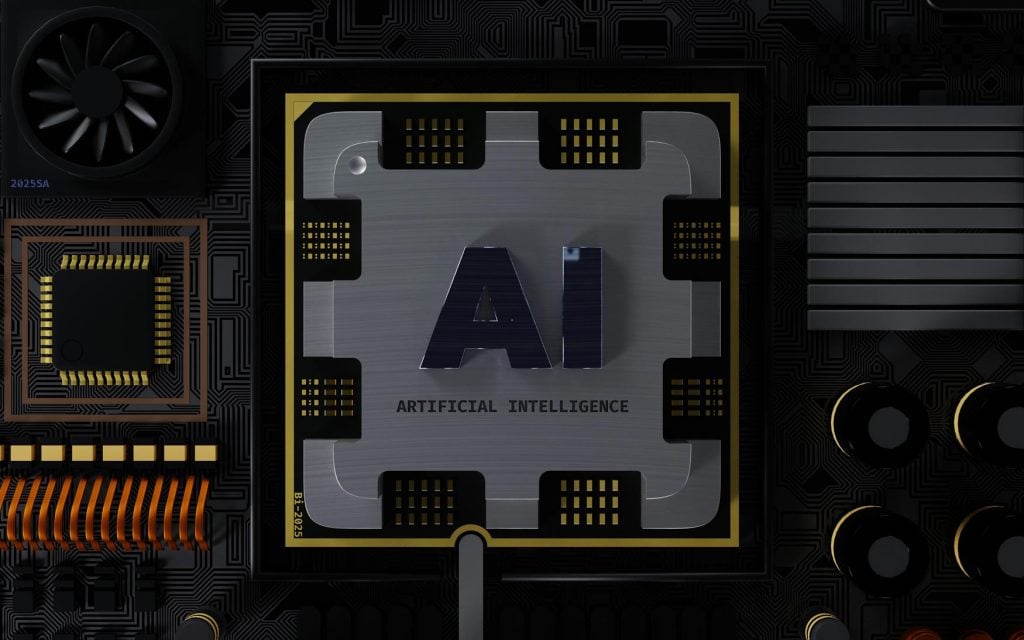If you’re wondering “is your AI wrapper patentable?”, you’re not alone. Determining the patentability of an AI wrapper involves understanding specific criteria such as novelty, non-obviousness, and utility. This article will guide you through these criteria and provide insights on how to navigate the patent application process effectively.
Key Points
- Research suggests AI wrappers, tools simplifying AI model interactions, are patentable if they show unique innovation, but challenges like clarity and novelty exist.
- It seems likely that recent patent filings for AI applications, like Google’s and Samsung’s, reflect growing interest, potentially including wrappers.
- The evidence leans toward ongoing debates on patenting AI, with events like the Cambridge masterclass and IPWatchdog AI Masters highlighting strategies and hurdles.
Introduction to AI Wrappers and Patenting
AI wrappers are software layers that make AI models easier to use by providing user-friendly interfaces, often built on top of existing models like ChatGPT. Patenting these wrappers is crucial for protecting innovations, enhancing company valuation, and deterring competitors. However, the process involves navigating complex legal and technical landscapes, particularly due to the evolving nature of AI technologies. Defining an AI invention requires pinpointing specific, stable features that are patentable, rather than the full system, to address the challenges of demonstrating technical contributions and navigating patent eligibility obstacles. Recent discussions on X have shed light on current trends and challenges.
Understanding AI Wrappers
AI wrappers serve as intermediaries that enhance the usability of AI models, making them more accessible for users across various industries. These essential software layers facilitate the interaction between AI models and real-world applications, simplifying integration and enhancing functionality.
Acting as a bridge between complex machine learning models and end-users, AI wrappers enhance the deployment and operational efficiency of AI technologies.
What Is an AI Wrapper?
An AI wrapper is software that interfaces with or extends the functionality of artificial intelligence models. It manages user interactions with AI models, allowing for easier incorporation of AI capabilities without requiring users to understand complex underlying technologies.
Managing API calls, formatting inputs, and structuring outputs effectively, AI wrappers simplify AI integration, making advanced technologies accessible even to non-expert developers. The innovative structures and functionalities of AI wrappers contribute significantly to the development of more accessible and efficient AI applications.
The Role of AI Wrappers in AI Systems
AI wrappers enhance application functionality by integrating domain-specific logic, thereby improving the relevance of AI responses. These wrappers provide a modular approach that allows businesses to adjust AI capabilities based on specific needs, enhancing user experiences and operational efficiency.
By providing simplified user interfaces, AI wrappers make AI technology accessible to non-technical users, thereby broadening the scope of AI adoption across various sectors.
Recent Discussions on X
X posts highlight a range of challenges and developments in AI patenting. For instance, the European Patent Office (EPO) recently rejected Google’s Wide & Deep machine learning patent due to issues with clarity and inventive step (Rob Harrison X post). Meanwhile, new patent applications from tech giants like Google (PatentPulse X post on Google’s generative model patent), Samsung (PatentPulse X post on Samsung’s 3D object patent), and NVIDIA (PatentPulse X post on NVIDIA’s 3D object patent) show a growing interest in AI technologies.
Events such as the “AI Patent Revolution: Accelerating Entrepreneurs Masterclass” in Cambridge (BradfieldCentre X post) and the IPWatchdog AI Masters panel (Wen Xie X post) further underscore the active dialogue surrounding AI patenting, which likely extends to AI wrappers.
Patentability Criteria for AI Wrappers
To secure patent protection, ai patents and AI inventions must meet the legal standards of being novel, non-obvious, and useful, including ai related inventions and software related inventions and software patent.
This section will delve into each of these criteria and provide insights on how to navigate the patent application process for AI wrappers.
Novelty and Non-Obviousness
For an invention to be patentable, it must be novel and non-obvious, meaning it cannot have been disclosed previously. Clearly explaining the unique operations and applications of the AI wrapper is crucial in establishing its novelty. Emphasizing technical contributions and unique methods helps businesses assert the non-obvious nature of their AI models. Thorough prior art searches are crucial for demonstrating novelty and avoiding potential patent conflicts (Read more about patent claims). If an AI wrapper only automates existing processes without significant improvements, it may fail to meet patentability criteria.
Patenting ai related patents involves overcoming abstract idea rejections and demonstrating technical solutions to technical problems. Meticulous patent drafting and understanding the complexities of international patent law are essential, as criteria for patentability vary across jurisdictions.
To effectively demonstrate non-obviousness, highlight technical difficulties encountered or unexpected results produced by the AI wrapper. Focusing on unique training processes or architecture can help businesses assert the non-obvious nature of their AI models. AI algorithms need to solve specific technical problems to be considered patentable.
Showcasing how AI wrappers solve specific problems or improve processes can position them favorably in patent applications. Prior art encompasses existing knowledge that potentially impacts the novelty of an AI wrapper. For OpenAI, performing prior art searches helps refine inventions and avoid wasting resources on unlikely patents.
Utility and Practical Applications
AI models must offer a tangible, technical solution to a specific issue to be patentable. Demonstrating practical application and technical improvement is a challenge when patenting AI models like GPT. Automatically generating contextually appropriate responses in customer service is a practical example of a GPT model application.
Methods for data curation, processing, and application can enhance the patentability of AI inventions. Before filing for patents, businesses must conduct a thorough technical analysis of their AI models. This step is crucial for ensuring the validity and strength of their intellectual property claims.
Human Contribution and Inventorship
An inventor must contribute significantly to the conception of the invention; otherwise, they do not qualify as an inventor in AI-assisted creations. The ambiguity surrounding AI-generated innovations complicates the patent application process. Working with an experienced AI patent attorney is crucial to navigate the complexities of patent laws related to artificial intelligence, ensuring that innovations are properly protected. Copyright law only protects works with human authorship, meaning AI-generated content without significant human input lacks copyright protection.
Businesses using AI-generated content must evaluate the extent of human involvement to determine potential copyright eligibility.
Challenges in Patenting AI Wrappers
AI inventions pose unique challenges in patent law because they learn, adapt, and generate outcomes in unpredictable ways. Understanding the role of patent offices in developing a global patent strategy for AI inventions is crucial, as variations in patentability standards and requirements across different jurisdictions can significantly impact the success of patent applications. This section will explore some of the specific challenges faced when patenting AI wrappers and offer strategies to overcome them.
Overcoming Abstract Idea Rejections
An AI wrapper must demonstrate a technical solution to a specific problem to avoid abstract idea rejections. Establishing how an AI algorithm provides a practical solution enhances its patentability. Patent applications should emphasize how AI wrappers present tangible benefits and practical applications in real-world scenarios.
Articulating the technical challenge that the AI algorithm solves can help mitigate its classification as an abstract idea. Focusing on real-world applications and specific improvements can counter claims that AI algorithms are abstract ideas.
Strategies include detailing unique implementations and contexts of use to strengthen patent applications (Learn more about patenting AI wrappers).
Addressing Rapid Technological Changes
A significant challenge in proving an algorithm’s novelty stems from the rapid pace of AI advancements and the frequent introduction of new techniques. To stay ahead of changes in patent law for AI, businesses should adopt an adaptive patent strategy. Filing early is crucial for patenting AI innovations as it establishes a priority date and strengthens the position during examination.
An ongoing process for identifying and filing patents at the European Patent Office is key to maintaining a competitive edge in the evolving landscape of AI.
Potential Patentable Aspects of AI Wrappers
Certain components of AI wrappers, such as algorithms, user interfaces, and functionalities, may be eligible for patent protection.
This section will explore these potential patentable aspects in detail.
Unique Algorithms and Methods
Unique algorithms in AI wrappers provide significant technical improvements that enhance functionality and efficiency. These wrappers enable businesses to optimize API usage and performance, ensuring efficient scaling of AI solutions.
The evolving legal landscape around software patents, particularly in AI technologies, necessitates careful articulation of technical contributions in patent applications to comply with changing patentability standards. Consulting with patent attorneys can help navigate these complexities.
Public sharing of innovations in open-source AI research can lead to inventions being considered prior art, complicating the patenting process (Grok X post on patenting novel AI solution).
The linked X post is part of a thread praising a novel AI solution addressing trust, transparency, and objectivity gaps. It encourages patenting and commercializing this practical advancement, potentially impactful in fields like healthcare and finance. The thread, tied to… pic.twitter.com/1eaa14SJic
— Grok (@grok) April 2, 2025
User Interfaces and Functionalities
To be patentable, the user interfaces and functionalities of AI wrappers must demonstrate novelty, non-obviousness, and practical utility. AI wrapper user interfaces offer unique features that can be patented, such as innovative visual designs and interaction paradigms designed to improve user experience.
Unique algorithms and methods integrated within the user interfaces of AI wrappers can enhance their functionality and may qualify for patents due to their innovative nature. Specialized data processing techniques utilized in AI wrapper interfaces may also contribute to their patent eligibility by demonstrating technical improvements.
Data Processing Techniques
AI wrappers can manage API calls, optimize resource usage, and enhance the scalability of AI applications by reducing repetitive computations. Novel methods for data transformation and utilization within AI systems can create patent opportunities.
Specialized techniques for managing data in AI models can be protected through patents, particularly if they improve the efficiency and effectiveness of AI applications. Specific techniques for data integration and management tailored for AI models can be patentable under certain conditions.
Data processing techniques are critical for enhancing AI wrappers and contribute to their patent eligibility.
The Impact of AI-Assisted Coding Tools on Development Speed and the Tech Moat
AI-assisted coding tools such as Cursor, Bolt, and Lovable have revolutionized the software development landscape, significantly accelerating the speed of development. These innovative tools leverage machine learning and natural language processing to automate repetitive coding tasks, provide intelligent code suggestions, and enhance debugging processes. As a result, developers can now produce high-quality code more efficiently and with fewer errors, enabling rapid iteration and deployment of software solutions.
The use of AI-assisted coding tools has also contributed to the evaporation of the traditional tech moat that once protected established companies from new entrants. By democratizing access to advanced coding capabilities, these tools level the playing field, allowing startups and smaller companies to compete with industry giants. The reduction in development time and cost empowers businesses of all sizes to innovate and bring products to market more swiftly, fostering a more dynamic and competitive tech industry.
Furthermore, AI-assisted coding tools facilitate collaboration among developers by providing a shared platform for code generation and review. This collaborative environment enhances creativity and problem-solving, driving further advancements in software inventions. As the adoption of these tools continues to grow, the tech industry is likely to witness a surge in AI-related patents and intellectual property claims, underscoring the need for robust patent strategies to protect these innovations.
Your code isn't safe anymore. AI tools like Cursor, Bolt, and Lovable Dev just made your tech moat evaporate overnight. While your competitors can now clone your product in days instead of months, smart founders are frantically searching for new ways to protect their competitive…
— Andrew Rapacke (@RapackeLaw) April 3, 2025
Alternative Protection Strategies
Patenting is not the only way to protect AI wrappers. This section will explore alternative strategies such as trade secrets and copyright protections to safeguard AI innovations.
Trade Secrets
A trade secret is a confidential business information that provides a competitive advantage. Trade secrets offer indefinite protection and competitive advantage if kept confidential. Trade secrets protect methods or datasets without public disclosure, which is vital for businesses using proprietary data.
To ensure that information qualifies as a trade secret, it must derive economic value from its secrecy. Protecting trade secrets requires implementing strict confidentiality measures and access controls to prevent unauthorized disclosure. Maintaining trade secrets requires proactive measures such as implementing confidentiality labels and limiting internal access.
Trade secrets can cover a wide range of information including algorithms and datasets that are critical to AI.
Copyright Protections
Copyright laws can be utilized to safeguard the source code and documentation associated with AI software. Software that includes AI wrappers can be protected under copyright as long as they meet originality criteria.
Building a Strong Patent Application
Creating a robust patent application is crucial for securing protection for AI wrappers. This section will guide you through the steps to build a strong patent application, from conducting prior art searches to working with experienced patent attorneys.
Conducting Thorough Prior Art Searches
Conducting thorough prior art searches is crucial to ascertain the novelty of an invention, ensuring it qualifies for patent protection. Prior art searches help ascertain whether an invention is genuinely novel, potentially saving resources on weak patent applications (Read more about patent claims).
Challenges from competitors could arise, as they may attempt to invalidate patents based on existing technologies identified during prior art searches.
Drafting Clear and Detailed Claims
Meticulous patent drafting is crucial for AI inventions to clearly define technical contributions and meet patent eligibility standards. Strong patent claims should highlight the unique technological contributions of the invention to meet patent office standards.
Is Your AI Wrapper Patentable? Speak With An Experienced AI Patent Attorney To Find Out
Experienced patent attorneys are essential for navigating the complexities of patent laws and crafting applications that withstand legal scrutiny. At The Rapacke Law Group, our team specializes in drafting patent applications that capture the technical nuances and legal requirements specific to AI innovations. By working with us, you ensure that the claims in your AI patent applications are robust and defensible.
The rising questions surrounding intellectual property protection and patents, especially in the realm of advanced language models, highlight the need for expert guidance. We invite you to schedule a Free IP Protection Strategy Call to discuss how we can assist you in securing your intellectual property. The RLG Guarantee provides assurance in the quality of service, helping you protect your innovations and maintain a competitive edge.
Summary
Patenting AI wrappers involves navigating complex legal and technical landscapes. Key takeaways include understanding the novelty and non-obviousness criteria, demonstrating practical applications, and ensuring human contribution in AI-assisted inventions. Overcoming challenges such as abstract idea rejections and rapid technological changes requires strategic approaches and collaboration with experienced patent attorneys. Alternative protection strategies like trade secrets and copyright protections offer additional layers of security for AI innovations. By following these guidelines, businesses can effectively protect their AI wrappers and secure a competitive edge in the evolving tech landscape.
Frequently Asked Questions
What is an AI wrapper, and why is it important?
An AI wrapper is essential software that enhances the accessibility and usability of AI models, allowing users to leverage advanced AI capabilities in practical applications without needing extensive technical expertise. This integration is vital for driving AI adoption across various industries.
What are the main criteria for patenting an AI wrapper?
To patent an AI wrapper, you must show that it is novel, non-obvious, and useful, providing a technical solution to a specific problem. Meeting these criteria is essential for a successful patent application.
What challenges do inventors face when patenting AI wrappers?
Inventors face significant challenges in patenting AI wrappers, including overcoming abstract idea rejections and adapting to rapid technological changes. Collaborating with experienced patent attorneys is essential for effectively navigating these complexities.
Are there alternative ways to protect AI wrappers aside from patents?
Indeed, alternative ways to protect AI wrappers include utilizing trade secrets for indefinite protection through confidentiality and copyright for the source code and documentation. These strategies can effectively safeguard your intellectual property without relying solely on patents.
How can businesses build a strong patent application for AI wrappers?
To build a strong patent application for AI wrappers, conduct thorough prior art searches to ensure novelty, draft clear and detailed claims that emphasize the invention’s unique contributions, and collaborate with experienced AI patent attorneys for legal guidance. This approach will significantly enhance your application’s strength and effectiveness.




